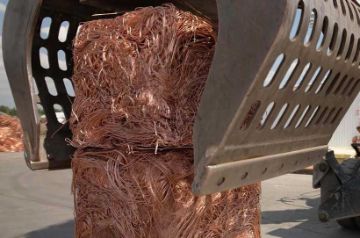- Markets
- Products
- Services
- News
- Tools & Resources
- About Nexans
- Search
- Contact us
- Compare
- Sign in
Liquified hydrogen infrastructures
Shaping the development of hydrogen infrastructures

In the race to net zero, hydrogen complements electrification to decarbonize energy, mobility and industry. The demand for renewable hydrogen is ramping-up quickly, and projects blossom for large scale production and usage.
In its liquefied form, hydrogen benefits from the highest weight-per-volume ratio (800x and 2x denser than the gas compressed at 1 and 700 bar respectively), making it possible to store larger energy amounts in limited volumes. This opens the field for applications of LH2 in heavy mobility, bunkering, and trading between producing and consuming places.
Like grids for electricity, hydrogen transport and storage infrastructures are critical assets to fully enable the hydrogen value chain: they must combine safety of operation, reliability, and efficiency to provide timely the right amount of hydrogen.
“ Nexans cryogenic systems for tank-to-tank LH2 transfer make the LH2 supply chain a reality. Today. ”
The race to net zero is on! To cross the finish line by 2050 industry needs to shed the burden of fossil fuels. But which energy sources have the power to replace them?
The race to net zero is on! To cross the finish line by 2050 industry needs to shed the burden of fossil fuels. But which energy sources have the power to replace them?
Due to its very low liquefaction temperature (-253°C i.e. 20°C above the absolute zero) hydrogen is amongst the most challenging fluids to keep at liquid state. Therefore, dedicated storage and transfer systems must be used to achieve highest degree of safety and efficiency.
For cryogenic transfer, Nexans vacuum-insulated cryogenic pipings are designed to minimize heat transfer between the cryogenic fluid and the environment resulting in:
- High safety of operation. The outer shell remains at room temperature in operation preventing the risk of injuries from icing, cryogenic burns or oxygen condensing
- Low boil-off (hydrogen regaseification) enabling the transfer of LH2 at high flow-rates over long distances
With unique ranges of diameters and flexibility, Nexans Cryogenic Systems are applicable for static and dynamic transfer of hydrogen over a broad range of flow-rates, fitting specifications of LH2 infrastructures for
- LH2 bunkering in maritime environments (ship-to-ship, ship-to-shore)
- Airport infrastructures
- LH2 fueling and bunkering for trucks, trains, etc.
More information about cryogenics systems:
LH2 transfer in maritime applications
Large continental and trans-continental projects are emerging all over the world to set LH2 supply chains between producing and consuming places. Maritime ports are structuring themselves to become major hydrogen hubs with development of LH2 terminals, storage facilities and connexion to in-land supply chains.
Maritime applications require transfering LH2 at high flowrates. Ship-to-ship and ship-to-shore transfer systems must also withstand dynamic mechanical stress resulting from the movements of LH2 tankers during cryogenic transfer operation.
Application
In 2021 Nexans has equipped and commissioned the world first LH2 loading arm system with long-length highly-flexible cryogenic transfer lines, making it possible the ship-to-shore transfer of LH2 at flowrates of several dozens of metric tons per hour.
Our unique expertize and ecosystem of partners allow us to provide turnkey solutions comprising the Loading Arm, the transfer lines, safety couplings and emergency release systems, and gas return lines.
LH2 is manipulated at temperatures approx. 80°C lower than LNG and requires the use of dedicated transfer systems. LNG systems are not compatible on several points:
- Thermal insulation: the thermal insulation of transfer lines used in LNG are not adapted to LH2 as they would not prevent oxygen from condensing, resulting in severe safety risk. Risks of severe cryogenic burns, finally the boil-off generated would make the application not economically viable.
- Materials: materials used for LNG transfer are not compatible with LH2. Polymeric solutions become brittle at such low temperatures. Risk of hydrogen embritllement from hydrogen diffusion into the piping material.
- Loading arms: loading arm structures for LNG are not designed to handle the weight of SST cryolines. Moreover, swivel joints used on the loading arm systems for LNG are leaky and will be a source of hydrogen leakage, resulting in severe safety risk.

Nota: For LNG, Nexans has developed dedicated solutions for carrying liquefied gases between shuttle tankers, LNG carriers and onshore LNG receiving terminals. Supersized 65cm diameter CRYODYN® makes it possible to increase transfer capacity up to nine times!
Airport infrastructures
Airports are preparing for low-carbon aviation and to become hydrogen hubs with on-site production and liquefaction facilities.
Airports authorities will have to manage several energy sources to fuel low-carbon airplanes (electrical power, liquefied hydrogen, sustainable aviation fuels) increasing the infrastructure complexity in places where safety and infrastructure footprint are major stakes.
Nexans high throughput transfer solutions would allow to bunker airplanes in the right timing. Our expertize developed with aerospace and maritime infrastructures allows us to propose solutions all along the supply chain from the storage tank to the airplanes, including safety systems to monitor the line integrity as well as safety couplings. Morerover, our superconducting and electrification solutions can help you execute your project from renewable power generation to balance of plant and charging systems.
LH2 refueling stations for heavy-duty road transportation
Nexans proposes solutions to equip hydrogen fueling stations:
- from LH2 storage tank to dispenser
- from dispenser to LH2 truck tank
Towards energy highways of tomorrow
Nexans is part of a European Consortium contributing to the EU-funded project SCARLET to develop superconducting cables with their cryogenics enveloppe that will enable more efficient and less costly power transmission from renewable electricity generation sites.
As part of the project, SCARLET Consortium is expected to develop the transport of electricity and hydrogen in the same pipeline.
Services
Our engineering team works closely with you to design and manufacture turnkey cryogenic transfer system customized to your specifications.
Our service portfolio covers pre-feasibility and feasibility studies, technical development, manufacturing and testing, installation and after-sales maintenance & support.
For spare parts, our service team will remain at your service.
Our websites
Select your country to find our products and solutions
-
Africa
- Africa
- Ghana
- Ivory Coast
- Morocco
- North West Africa
- Americas
- Asia
- Europe
- Oceania







